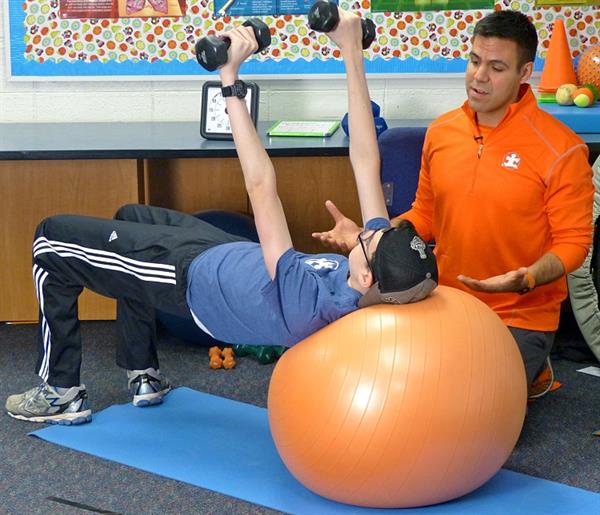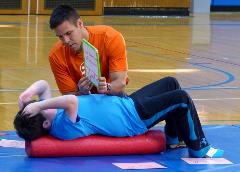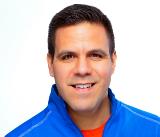David S. Geslak, BS, ACSM-EP |
April
15, 2021

Personal Trainers Need More Clients. And Persons with Autism Need Personal Trainers.
Key Points
-
The autism community needs exercise and the place where many should be getting it, the schools, is leaving them wandering and wondering.
-
Persons with autism thrive with individualized, in-person instruction.
-
While virtual training continues to grow, personal trainers have an opportunity to make a meaningful impact on a community that needs exercise.
Over the past year there has been a dramatic increase in virtual workout options, leading many to claim that face-to-face personal training is “dead.” While it may be true that many people have gone virtual (and many won’t return), there is a segment of the population that needs the personal attention of in-person training — persons with autism.
Autism spectrum disorder (ASD) is the fastest-growing developmental disability in the world (5). According to the U.S. Centers for Disease Control and Prevention, one in 54 children is diagnosed with autism. Supporting research for the autism community shows that exercise can improve focus, on-task behavior, and language development and reduce maladaptive or stereotypical behaviors (1-5).
Many — maybe most — persons with autism learn best with individualized, in-person instruction in both the school and therapy settings (e.g., physical, occupational, behavioral). In response to COVID-19, the education system has gone primarily virtual and its effects, shown in a recent study, are detrimental.
Personal training is a perfect match for the way this community learns. And they need it more than ever because physical education (PE), in many schools, continues to go by the wayside.
Many Persons with ASD are Left Wandering and Wondering in the Gym
The Every Student Succeeds Act (6) and the Individuals with Disabilities Education Act (2004) support participation in physical education in schools for students with disabilities. That said, many students with autism do not receive appropriate physical education services or the full benefits from physical education.
The U.S. Government Accountability Office identified key challenges in physical education for those with disabilities — lack of clarity regarding schools' responsibility in PE, limited teacher preparation, and budget constraints (7). In response to these shortcomings, the fitness industry has an opportunity to help the autism community achieve the many lifelong benefits of exercise.
Creating Autism Exercise Programs that Make a Difference
Having gyms and fitness centers welcoming this community is a needed first step, as many in this community are still being turned away because trainers don’t know how to teach them. Just as you would educate and prepare yourself to lead a HIIT, yoga, or spin class, it is even more critical to educate yourself when working with persons with autism. Developing an exercise plan for persons with autism that is only 90% correct will most likely result in 100% failure.
ACSM and I created the Autism Exercise Specialist Certificate so you will have the protocols and tools you need to make a difference. We need to take action to help these individuals and their families. As gyms, fitness centers and trainers struggle to find new clients to replace those who are now working out on their Peloton® bikes, the ASD community is a new opportunity to find clients who want and need your services. Empowering the ASD community to make the exercise connection is worth the effort.
They’re waiting…so let’s get moving!
View More on Autism from David Geslak

3 Key Elements to Successfully Training Children with Autism
News: Autism Acceptance Month AND Autism Exercise Month?

David S. Geslak, BS, ACSM-EP, the founder of Exercise Connection, has pioneered exercise tools and programs to engage and improve the lives of those with autism. David also created the Autism Exercise Specialist Certificate (AESC) in partnership with ACSM. He has trained professionals around the world on the AESC. His commitment and methodology to bringing exercise to persons with autism has been enthusiastically embraced by professionals, higher education, and the autism community.
REFERENCES
- Elliott RO Jr, Dobbin AR, Rose GD, Soper HV. Vigorous, aerobic exercise versus general motor training activities: effects on maladaptive and stereotypic behaviors of adults with both autism and mental retardation. J Autism Dev Disord. 1994;24(5):565-76. Epub 1994/10/01. doi: 10.1007/BF02172138. PubMed PMID: 7814306.
- Nicholson H, Kehle TJ, Bray MA, Heest JV. The effects of antecedent physical activity on the academic engagement of children with autism spectrum disorder. Psychol Sch. 2011;48(2):198-213. doi: 10.1002/pits.20537.
- Schmitz Olin S, McFadden BA, Golem DL, et al. The effects of exercise dose on stereotypical behavior in children with autism. Med Sci Sports Exerc. 2017;49(5):983-90. Epub 2017/01/07. doi: 10.1249/MSS.0000000000001197. PubMed PMID: 28060033.
- Sowa M, Meulenbroek R. Effects of physical exercise on autism spectrum disorders: a meta-analysis. Res Autism Spectr Disord. 2012;6(1):46-57. doi: 0.1016/j.rasd.2011.09.001.
- Tse ACY, Liu VHL, Lee PH. Investigating the matching relationship between physical exercise and stereotypic behavior in children with autism. Med Sci Sport Exerc. 2021;53(4):770-775. doi: 10.1249/MSS.0000000000002525.
- U.S. Department of Education. Every Student Succeeds Act (ESSA). 2015.
- U.S. Government Accountability Office. Students With Disabilities: More Information and Guidance Could Improve Opportunities in Physical Education and Athletics. 2010.